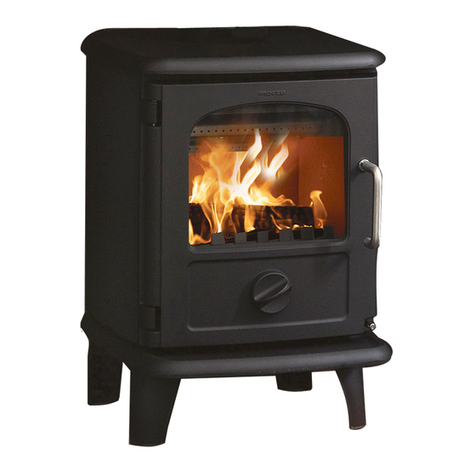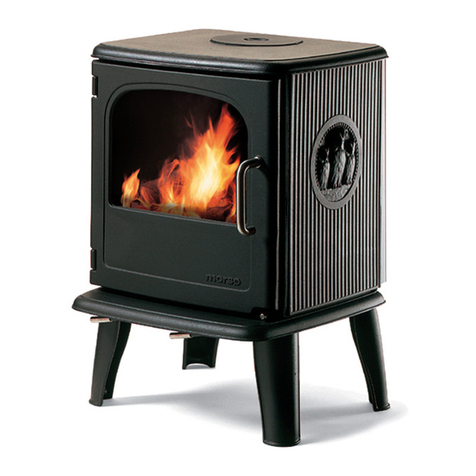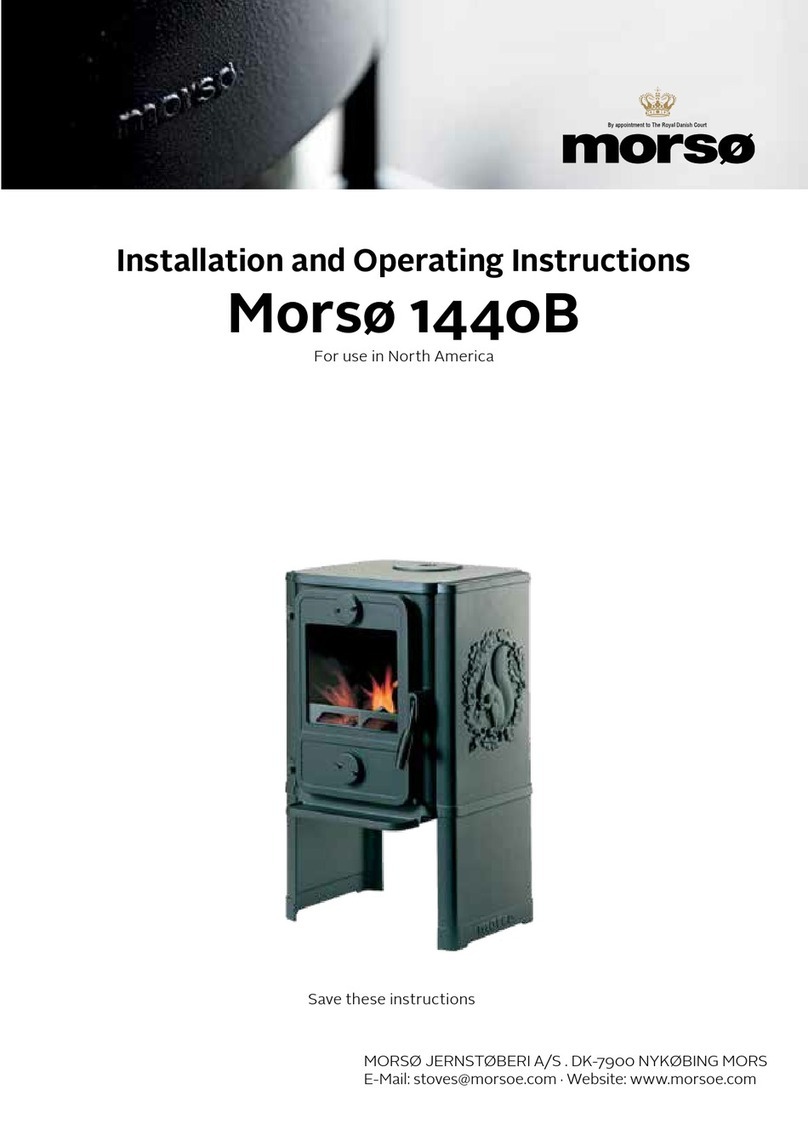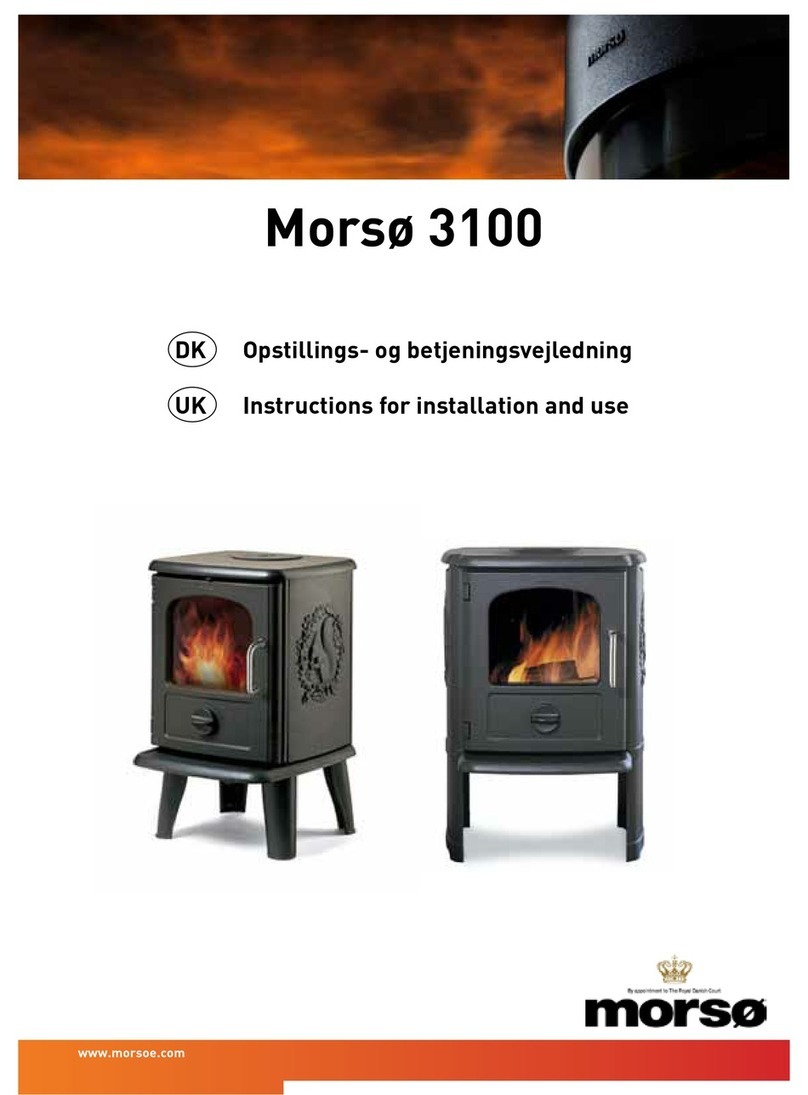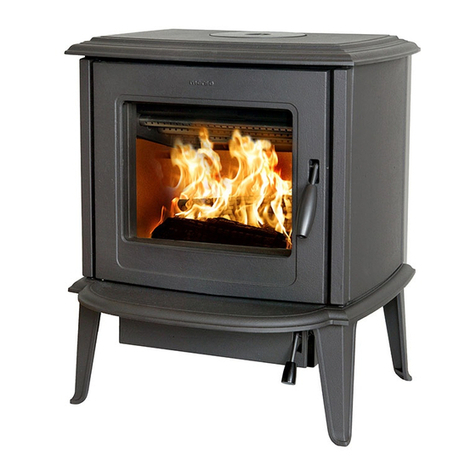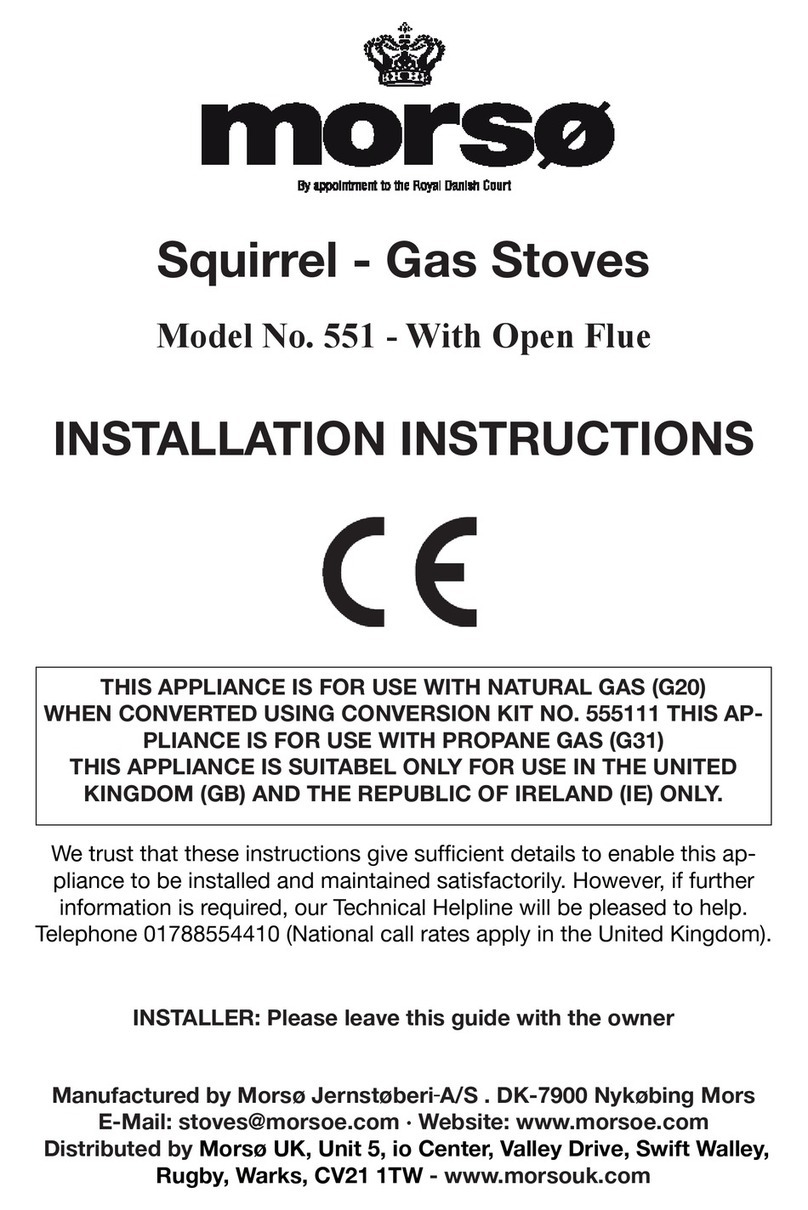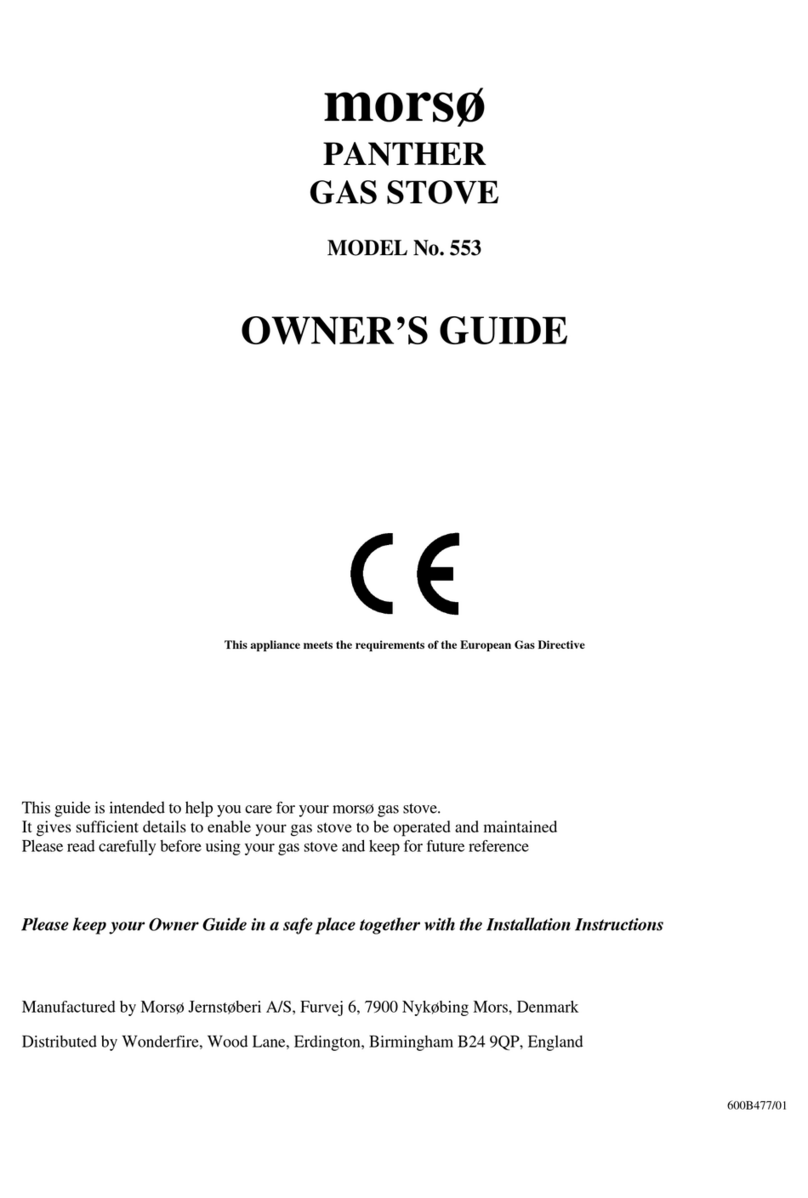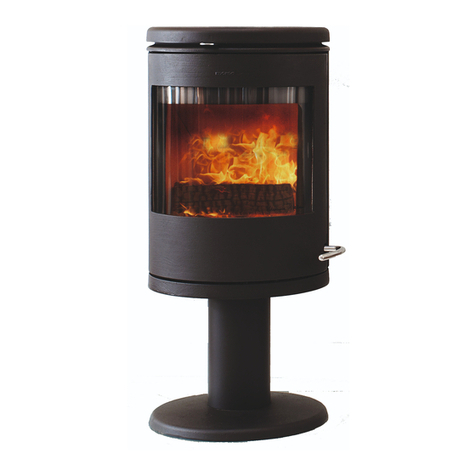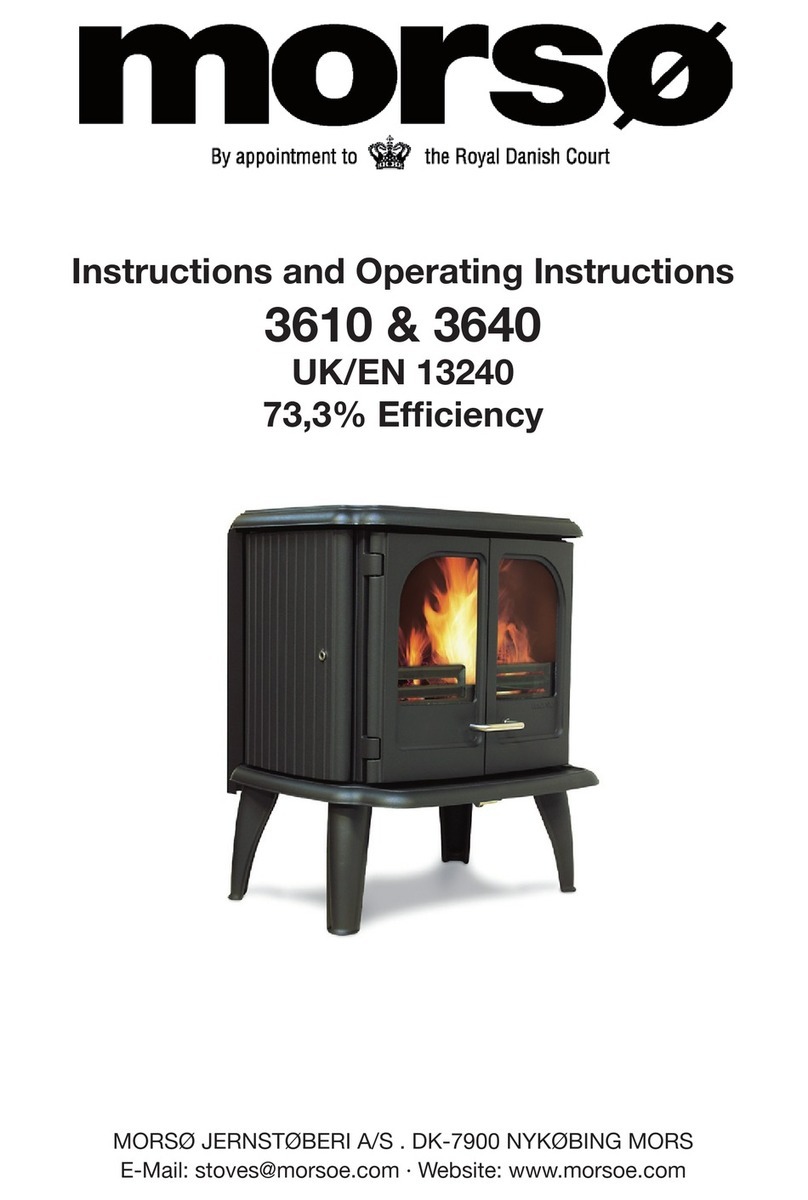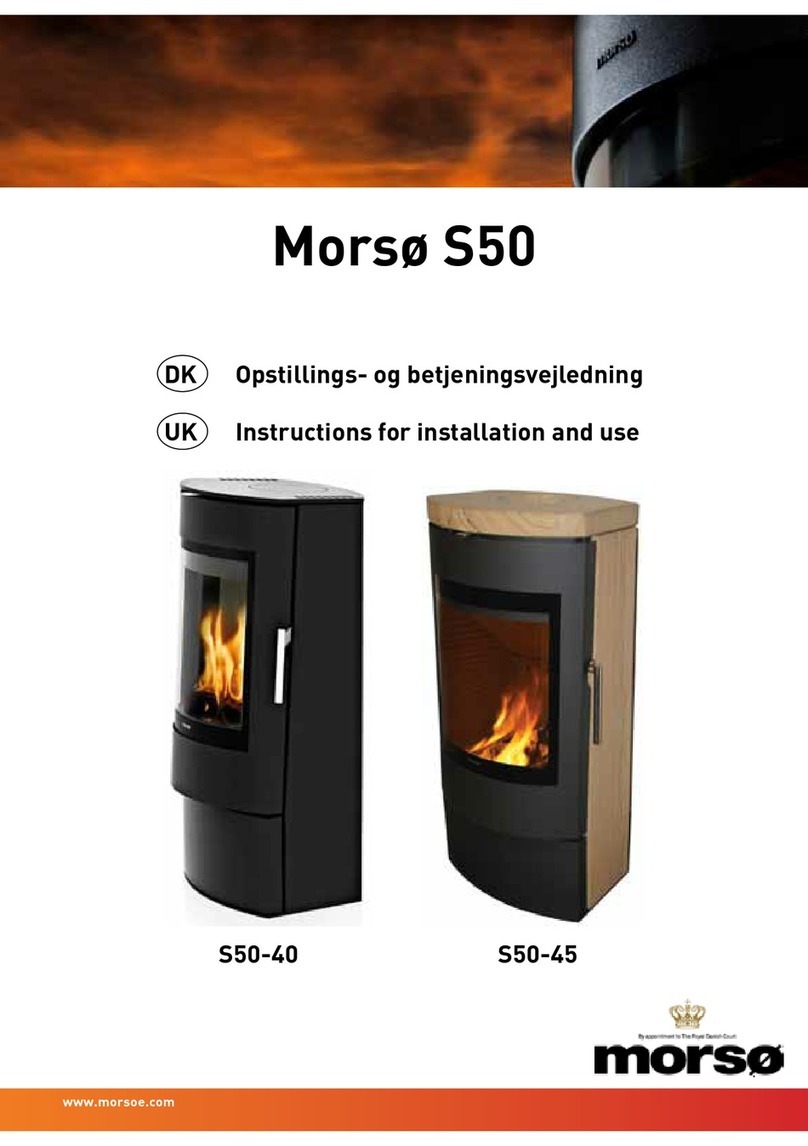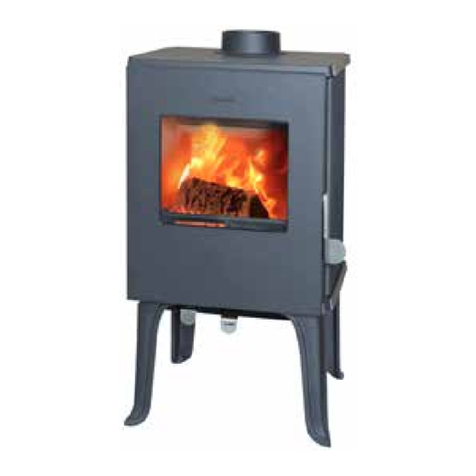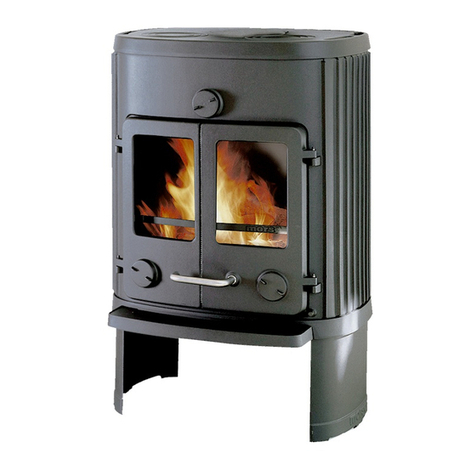2.0 Fyringsteknik/Brugen af Deres ovn
Ovnens varmeafgivelse reguleres med reguleringshåndtaget over lågen.
Ovnen har 3 typer forbrændingsluft.
Primær forbrændingsluft, der tilføres op gennem askeristen. Denne luft reguleres af håndtaget
over lågen. Minimums position er i midten og maximum position er helt til venstre. Denne luft-
type benyttes kun i opstarten ved dårlige driftforhold. Dette sikrer en god antændelse af træet.
Sekundær forbrændingsluft, der tilføres ned langs glasset. Denne luft reguleres også af håndtaget
over lågen. Minimums position er i midten og maximum position er helt til højre.
Tertiær forbrændingsluft der tilføres forbrændingen lige over bålet. Denne lufttilførsel kan ikke
reguleres.
Ovnens nominelle varmeydelse er 4,0 kW.
Deres nye Morsø ovn er EN afprøvet og anbefalet til fyring med træ.
VIGTIGT!
Træ er et yderst gasholdigt materiale (ca. 75 %). Disse gasser frigives under opvarm-
ning og antændelse af træet. Det er derfor vigtigt at disse gasser antændes hurtigt ef-
ter en påfyldning.
Ligger træet kun og ulmer, specielt efter en ny påfyldning, giver det en kraftig røgud-
vikling, som i værste fald kan forårsage en eksplosionsagtig antændelse af gasserne
med skader på ovnen til følge.
For at kunne antænde disse frigivne gasser fra træet og opretholde klare og blivende
flammer i forbrændingsforløbet, er det derfor vigtigt altid at tilføre den nødvendige
mængde ilt (luft)
Indstilling af lufttilførsel, optændingsmetode og fyringsintervaller er afhængig af
skorstenstræk, vind- og vejrforhold, varmebehov, brændsel m.m. Derfor kan der gå
tid, inden De kender ovnens korrekte funktion under de givne forhold.
Selv om der kan fyres med næsten alle former for træ i Deres Morsø ovn, bør man ikke
fyre med vådt eller ulagret træ. Træ bør under tag lagres mindst 1 år og helst 2 år med
fri adgang for vind. Træ skal kløves hurtigst muligt efter fældningen, hvis det skal tør-
re hurtigt.
Brug aldrig drivtømmer, da det som regel er meget saltholdigt, og ødelægger dermed
både ovnen og skorsten. Imprægneret og malet træ samt spånplader udsender giftig
røg og dampe og må derfor heller ikke anvendes som brænde.
Bemærk, der må ikke anvendes flydende brændsel i ovnen.
Brændestykker med en diameter større end 10 cm bør altid kløves.
Brændestykkerne må ikke være længere, end de kan ligge plant over glødelaget med
luft til begge ender.
Maximal brændelængde i ovnen er 25 cm.
Maximal brændemængde for ovnen er ca.1 kg i timen
De første optændinger skal være moderate, således at den varmebestandige maling
kan hærdes, inden der fyres kraftigere. Malingen kan i hærdningsfasen udvikle røg og
lugtgener under den første optænding, hvilket er ganske normalt. Sørg derfor for ud-
luftning i denne periode.
2.1 Optænding og fyringsintervaller
Under optænding er der behov for en stor luftmængde. Startes der op med en helt kold ovn, kan
man med fordel lade døren stå på klem de første minutter.
For at opbygge et isolerende askelag i bunden af ovnen, bør De ved første optænding afbrænde
ca. 1,5-2 kg tørt pindebrænde. Behold herefter altid ca. 1 cm aske i bunden af brændkammeret.
1. Glødelaget dannes ved optænding med 1,5-2,0 kg træ
samt et par optændingstabletter efter følgende metode:
Ovenpå et par større kævler á 0,25-0,50 kg placeres
en stablet bunke små pinde. Under de øverste pinde
anbringes optændingstabletterne som antændes.
2. Der åbnes helt for sekundærluften vha
reguleringshåndtaget. (træk helt til højre)
3. Efter antænding af optændingstabletter lukkes fyrdøren
på klem, så der er godt med træk ved en åbning på ca. 1
cm.
4. Når man kan se (efter 5-10 min.), at skorstenen er så
varm, at der er træk igennem den, lukkes døren helt. Hvis
alle forudsætninger er opfyldt, vil der efter yderligere ca.
40 min. være dannet et pænt glødelag i brandkammeret.
5. Normal påfyring bør ske, mens der endnu er gløder
tilbage. Fordel gløderne i bunden, dog flest foran i ovnen.
6. Der lægges et stykke brænde à ca. 0,5-0,9 kg og 20-25 cm
lang ind over gløderne . Bedste forbrænding opnås hvis
kævlens længderetning er parallel med ovnens bagvæg.
7. Når den sekundære lufttilførsel er åbnet på max. og døren
lukkes, vil den friske træ mængde være antændt på et
par minutter.
Vigtigt!
Det er vigtigt, at den friske træmængde hurtigt be-
gynder at brænde. En hurtig antændelse af brændet
opnås ved at åbne forbrændingsluften på max. el-
ler ved at lade døren stå på klem for at tilføre den
mængde luft, der skal til for at antænde træet.
Hvis brændet derimod kun ulmer, giver det en kraf-
tig røgudvikling, som i værste fald kan forårsage en
eksplosionsagtig antændelse af røggasserne med ri-
siko for såvel materielle skader som personskader.

